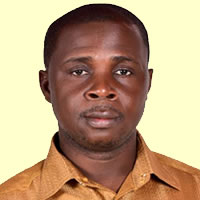DISABILITY
Introduction
Persons with disabilities (PWD) have been defined as those who are unable to or are restricted in the performance of specific tasks/activities due to loss of function of some part of the body as a result of impairment or malformation (Ghana Statistical Service, 2012). As a result, PWDs face a wide range of life challenges because disability, in whatever form or type, can reduce an individual’s ability to function to his/her full potential. Disability can limit an individual’s full participation in a number of activities in life. Estimates from the World Health Organization (WHO) indicate that there are more than 600 million PWDs in the world, of which approximately 80.0 percent live in low-income countries (Ayiku, 2012).
The 1992 Constitution of the Republic of Ghana provides for the guarantee of the fundamental human rights of all persons including PWDs (Republic of Ghana, 1992). In addition, Ghana has signed, ratified and adopted international agreements, such as the Convention on the Rights of PWDs and the African Decade of the Disabled Persons which seeks to protect the fundamental freedoms and human rights of all PWDs and to promote and respect their inherent dignity. Notwithstanding these statutes and conventions, PWDs have continued to experience various barriers that prevent their full and effective participation in society on an equal basis with persons without disability. In 2006, the Parliament of Ghana enacted the Disable Act to protect and promote the wellbeing of PWDs in Ghana.
Decision makers and development actors need to know and understand the characteristics of persons with disability to enable them formulate laws and policies and develop programmes as well as projects to ensure their proper integration into the socio-economic development of the country. The 2010 Population and Housing Census for the first time included questions on disability to provide relevant information for decision making.
Population with Disability
Table 6.1 presents population by disability type and sex. A total of 571 persons, representing 2.8 percent of the 20,282 persons enumerated in the district have disabilities which is higher than that of the region (2.3%). The 571 persons living with one form of disability or other comprised 50.3 percent males and 49.7 females. Similarly, with the male population, 97.2 percent has no disability with 2.8 percent having some disability. In the case of the female population, 97.1 percent has no disability and 2.9 percent has some disability.
Types of Disability and Sex
A total of 571persons with disability reported a total of 856 disabilities yielding an average of 1.50 disabilities per person. That means that, 50.0 percent of the population with disability has multiple disabilities. Among females, 284 persons with disability reported a total of 414 disabilities giving, an average of 1.46 disabilities per person. In the case of males with disability, the 287 persons with disability reported a total of 442 disabilities giving, an average of 1.54 disabilities each. This means that, 46.0 percent and 54.0 percent of the females and males with disability respectively reported more than one type of disability.
Analysis of the types of disabilities reveals that PWDs reporting sight impairment form 44.5 percent followed by physical and hearing disabilities which account for 34.9 percent and 23.5 percent respectively. The remaining disability types are distributed as follows: intellectual (12.1%), emotional (12.8%), speech impairment (11.0%) and other not specified (11.2%). Figure 6.1 also presents population by disability type and sex.
In relative terms, there are more male PWDs suffering from most of the disability types enumerated than their female counterparts. Thus, with the exception of physical disability and other disability (not specified), males form higher proportion than their female counterparts.
Disability and Economic Activity
Table 6.5 shows population 15years and older with disability by economic activity status and sex. A total of 474 out of the 571 PWDs in the district representing 83.0 percent is aged 15 years and older. In terms of sex, the 474 PWDs aged 15 years and older comprised 245 males (51.7%) and 229 females (48.3%). Table 6.5 depicts that 46.4 percent of persons living with disability is employed, 51.9 percent is economically not active and 1.7 percent is unemployed. On the other hand, persons without disability recorded 76.9 percent of their population as employed, 2.4 percent unemployed and 19.5 percent is economically not active.
Thus, persons without disability have a significantly higher proportion of their population employed than PWDs in the district. In terms of type of disability, more than half of those suffering from sight, physical and intellectual disability in the district were economically not active. On the other hand, less than 50.0 percent of persons suffering from hearing and speech impairment as well as emotional disorders is economically not active. PWDs with other disability not specified recording the least proportion of economically not active population (23.9%).
With respect to PWDs employed, the results of the analysis indicate that those having disabilities relating to emotional disorders, hearing and speech impairment recorded more than 50.0 percent. It emerged that persons who mentioned other disabilities not specified has the highest proportion of the employed (71.7%) while physically disabled registered the least proportion (28.2%). Analysis of unemployment data on the basis of type of disability reveals that none of PWDs suffering from sight and speech impairment as well as emotional disorders was unemployed. Unemployment rate is relatively low ranging from 2.2 percent (hearing and intellectual) to 4.3 percent (other not specified). In terms of sex, 50.6 percent of males with disability are employed while 47.3 percent and 2.0 percent respectively is classified as economically not active and unemployed. Of the females with sight disability, 46.7 percent is employed, 53.3 percent is economically not active and none of them is unemployed. Among female PWDs, 41.9 percent is employed relative to 1.3 percent unemployed and 56.8 percent are economically not active.
Disability and Education
Appendix 2 shows the highest level of education of population three years and older by sex and disability type in the district. For PWDs in the cohort age three years and older, 67.0 percent have no education. The results from the analysis show that 29.0 percent have attained basic level, followed by 3.1 percent and less than one percent (0.7%) who have attained secondary level (secondary, SSS/SHS, vocational, technical and commercial) and post-middle/secondary level. However, one person with disability has attained bachelor’s degree (0.2%), with none attaining post-graduate level. For persons without disability, 32.4 percent has never attended school, 59.8 percent have attained basic education, followed by 5.8 percent and 1.6 percent who have attained secondary level (secondary, SSS/SHS, vocational, technical and commercial) and post-middle/secondary level respectively. Less than one percent (0.3%) reached the tertiary level.
On the basis of sex and level of educational attainment, it could be seen that males living with disability account for 44.7 percent of those without education compared with 55.3 percent for their female counterparts. More than one-half of the male PWDs (59.1%) has never attended school, 33.7 percent has attained basic education (nursery, kindergarten, primary, JSS/JHS and middle) with only one person attaining graduate level education. In the case of females living with disability, 75.0 percent has never attended school, 24.3 percent has attained primary education and the highest level of education attained is vocational, technical or commercial by one person.
In terms of education by type of disability, 70.3 percent of persons suffering from sight impairment (which accounts for the highest proportion), has no education and only one person has attained post middle/secondary certificate level (0.4%). However, for speech disability which accounts for the least proportion among persons with disability, 50.8 percent of them have no education. Also, 18.6 percent has attained JSS/JHS level with the least being one individual who has attained post-secondary diploma (1.7%).
With respect to sex and type of disability by education, male PWDs with sight disability account for the highest proportion of 64.6 percent that has never been to school. Also, 28.5 percent of them have attained basic education. For female persons who have sight disability, 76.7 percent have never been to school. However, 21.6 percent has attained basic level and only one person with sight disability has attained vocational, technical or commercial education. This is followed by female PWDs with emotional disability (which accounts for the least proportion), with 64.0 percent that has never been to school and the highest level of education attained is SSS/SHS by one person.
Date Created : 11/23/2017 4:33:08 AM






 facebook
facebook twitter
twitter Youtube
Youtube TOLL FREE 0800 430 430
TOLL FREE 0800 430 430 +233 593 831 280
+233 593 831 280 GPS: GE-231-4383
GPS: GE-231-4383 info@ghanadistricts.com
info@ghanadistricts.com Box GP1044, Accra, Ghana
Box GP1044, Accra, Ghana